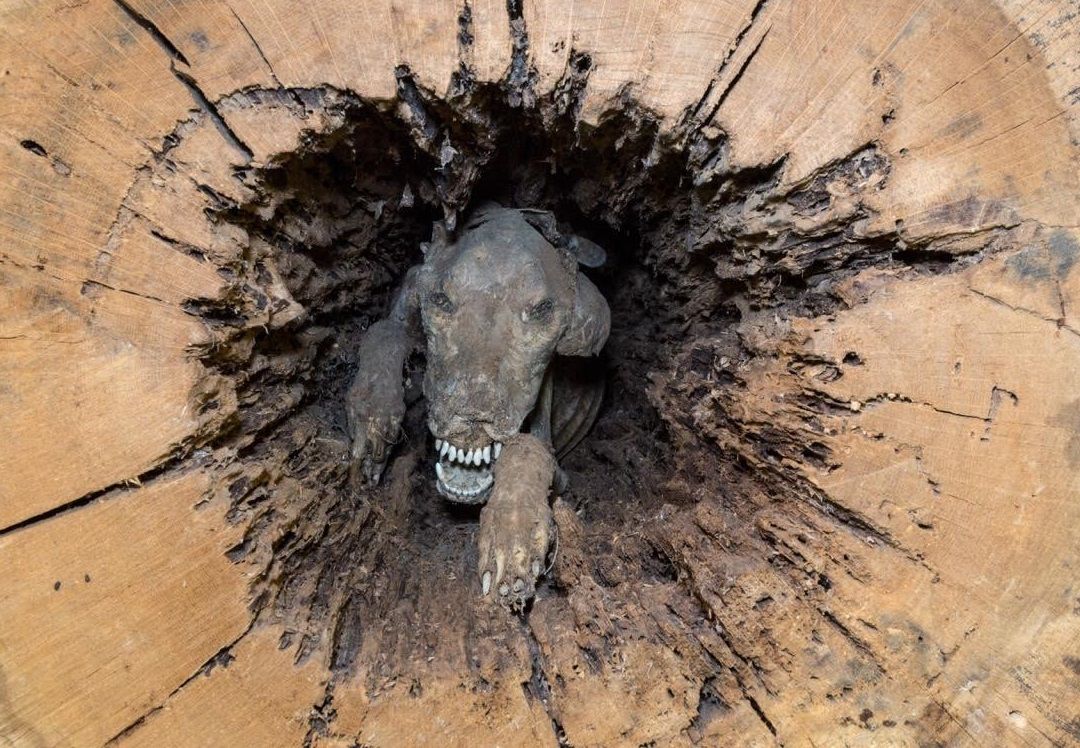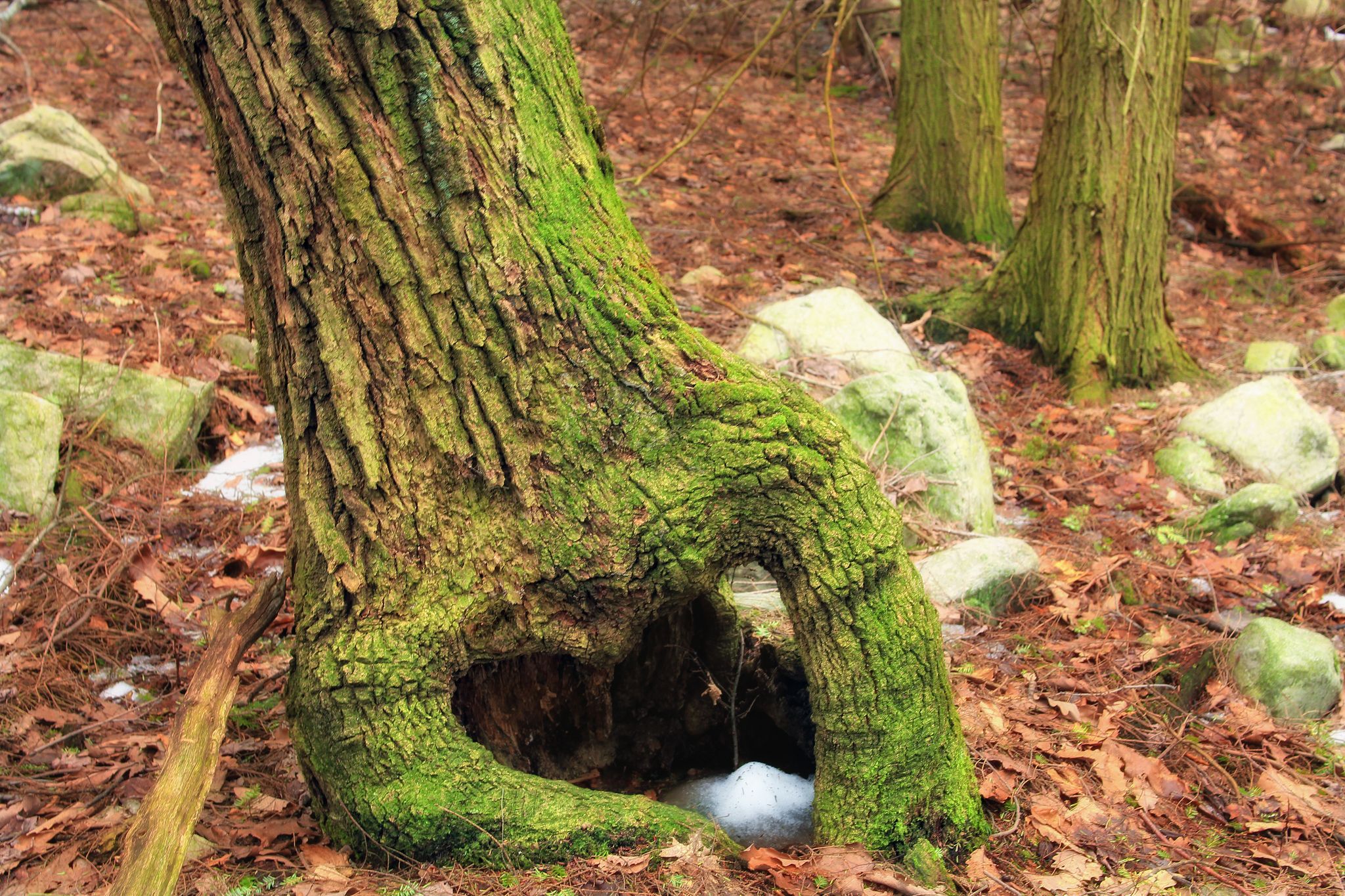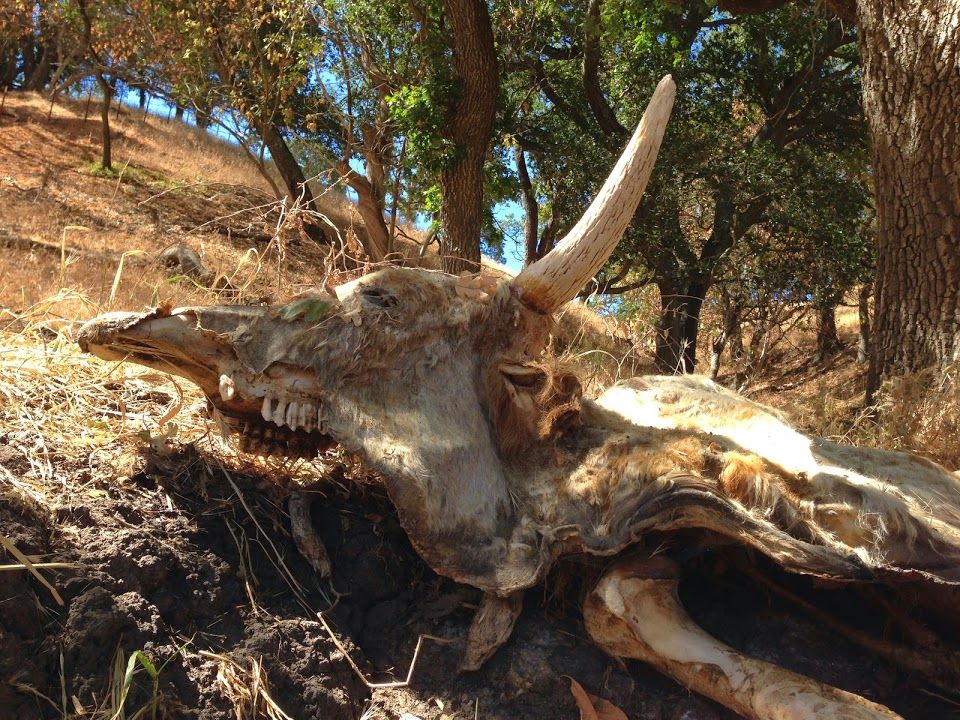
The Georgia Kraft Corp. loggers discovered a petrified brown and white hunting dog inside the hollow of a chestnut oak tree while loading it onto a transport truck, but it was too late to save him from his woody fate. The incident occurred in 1960 when the dog chased something into the tree, shimmied 28 feet up, and got stuck. He never caught his prey and remained trapped, ultimately perishing. Loggers found the immobile canine twenty years later and donated the whole log to Southern Forest World instead of pulping it. The dog, named Stuckie, has been the museum’s star attraction ever since. Visitors can view the hound through glass into the tree where he remains petrified in an eternal struggle for freedom. The wooden tomb itself dry-preserved the dog, as described by Kristina Killgrove, a biological anthropologist at the University of West Florida who studies decay in humans.


On a dry ranch in California, parts of a bull were naturally mummified while other parts, such as the brain and internal organs, decayed. Stuckie, a preserved dog found in a tree in Georgia, was kept intact due to the positioning and shape of the tree which had a chimney effect, making it difficult for animals to detect the scent. Other animals have also been accidentally preserved through natural desiccants like dry sand or salt. In the past, builders would even put cats in the walls of houses to preserve them and ward off witches. While we all have to pass on eventually, proper preservation methods can keep our bodies intact, leaving a lasting impact on the world we leave behind.

